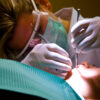Here Comes the Sun (Part 2): Cover It Up, Rub It In, Slip Them On
by Michelle Place, CRNP-P
Now that we have determined when to avoid the sun, let’s talk about how to protect your children when they do go out in the sun.
Cover Up: Not All Clothes are Created Equal
Just because skin is under clothing does not mean it is safe from the sun. The degree of sun protection provided by clothing is defined by the ultraviolet protection factor (UPF).
| UPF Rating | Protection Category | % UV radiation Blocked |
| UPF 15 – 24 | Good | 93.3 – 95.9 |
| UPF 25 – 39 | Very Good | 96.0 – 97.4 |
| UPF 40 – 50+ | Excellent | 97.5 – 99+ |
Factors that contribute to the UPF rating of a fabric are:
- Tightness of the weave or knit (tighter improves the rating) this probably contributes more than other factors to the UPF of a garment. A tighter weave literally has smaller holes between the threads. Shrinkage from repeated washing and drying may actually improve it’s UPF, however, clothes should not feel tight on your body.
- Stretch (more stretch lowers the rating) snug fitting clothes can stretch and expose more skin to the sun. If you can see light through the fabric, UV rays can get through, too.
- Condition (worn and faded garments may have reduced ratings)
- Type of fiber (cotton, polyester, etc.) synthetic or semi-synthetic fibers like polyester or rayon offer the greatest protection.
- Color (darker colors are generally better)
- Moisture (many fabrics have lower ratings when wet)
- Finishing (some fabrics are treated with UV absorbing chemicals) a garment’s photo protective capacity may also be enhanced by washing with detergents containing optical whitening agents.
The Skin Cancer Foundation in the United States has developed a list of products, including cosmetics, clothes, and laundry additives, that can provide added sun protection.
http://www.skincancer.org/prevention/seal-of-recommendation
Top it Off: Don’t forget a hat!
Choose a hat with a brim that extends at least 3 inches all the way around to protect your scalp, ears, face and the back of your neck from the sun’s harmful rays.
Rub It In: Apply sunscreen
With so many sunscreen products on the shelf, trying to choose the right one can be overwhelming. Here is a breakdown of terms found on sunscreen labels to help you decide which one is best:
-Sun Protection Factor (SPF): indicates the level of sunburn protection provided by the sunscreen but only pertains to UVB protection. SPF is determined by measuring the amount of time spent in the sun it takes to cause a sunburn when a person is using sunscreen compared to a person whose skin is bare. For example, when you use sunscreen with an SPF of 30 your skin receives the equivalent of 1 minute of UVB rays for each 30 minutes you spend in the sun. In other words, 1 hour in the sun wearing SPF 30 sunscreen is the same as spending 2 minutes in the sun totally unprotected.
Higher numbers do mean more protection but the scale is not linear which means that SPF 30 does not provide twice the protection of SPF 15. The higher you go, the smaller the difference becomes:
- SPF 15 filters out about 93% of UVB rays
- SPF 30 about 97%
- SPF 50 about 98%
- SPF 100 about 99%.
There is talk of limiting the maximum SPF value on sunscreen labels to “50+” because products with SPF values higher than 50 do not really provide much more protection for users than products with SPF values of 50.
-“Broad Spectrum:” indicates UVA protection. To comply with FDA regulations these products must provide UVA coverage that is equal to their UVB protection. As a result, sunscreens with higher SPF values will provide higher levels of UVA protection as well.
-Water resistance claims on the front label must indicate whether the sunscreen remains effective for 40 minutes (“water-resistant”) or 80 minutes (“very water-resistant”) while swimming or sweating, based on standard testing. Manufacturers can no longer label sunscreens as “waterproof,” “sweat proof,” or identify their products as “sunblocks,” because these claims overstate their effectiveness.
Application. You should use sunscreens with SPF 30 or higher. Although there is only minimal increased effectiveness for sunscreens with SPF over 15 in experimental settings, people typically do not apply sunscreen in the recommended amount. The use of a higher SPF will help make up the difference. The recommendation for adults is to apply approximately 1 ounce of sunscreen per total body application.
Sunscreen should be applied 15-30 minutes before sun exposure to allow a protective film to form on the skin.
Be careful with spray-on sunscreens. Application of these products can be uneven leaving some spots unprotected. Do not forget to cover your odd bits and bobs such as: ears, lips and the tops of feet.
Reapplication at least every 2 hrs is necessary. Sunscreen should be reapplied even more frequently if you are engaging in activities involving water or lots of sweat and especially after you have toweled off.
Infants: For infants less than 6 months of age it is best to avoid direct sunlight and to protect them with shade and clothing including brimmed hats and sunglasses as well as lightweight pants and long-sleeved shirts. If avoidance of the sun is impossible a small amount of sunscreen with an SPF of 15 or higher can be applied to the face and the backs of the hands. Sensitive skin or “baby” formulas are recommended.
http://www.fda.gov/ForConsumers/ConsumerUpdates/ucm309136.htm
Safety: Sunscreens have an excellent safety profile and are not absorbed significantly into the body through the skin. Rashes occasionally occur. Test any new products on a small patch of skin prior to applying it to your child’s entire body.
- Vitamin D: Sun exposure is necessary for the skin to make vitamin D. In experimental settings, applying the recommended amount of sunscreen before sun exposure decreases vitamin D production, however, people typically do not apply the recommended amount of sunscreen. In studies of real-life scenarios, there is no evidence that sunscreen use significantly decreases the body’s vitamin D production. If you are worried you can give your child oral supplements of vitamin D. Experts in skin cancer prevention oppose intentional sun exposure for vitamin D production because UVR is a known cancer causer.
- Be especially careful if taking medications: Even over-the-counter medications such as Ibuprofen can make your child more susceptible to sunburn. There are also some antibiotics and other classes of prescription drugs that lower your skin’s tolerance for the sun. Be sure to check with your doctor.
- Combination Products: Do not use products that contain both sunscreen and insect repellent. Sunscreen needs to be reapplied every 2 hours which is too frequent for the re-administration of bug spray. Any product, including cosmetics, that claim sunscreen properties on their label are subject to the same regulations as sunscreens alone. If you are going to wear insect repellent or make-up along with sunscreen, apply the sunscreen first.
- Expiration: Sunscreens may become less effective over time, and leaving them in high temperatures like a hot car or lying in the sun on the beach may speed up the process. Manufacturers recommend throwing away sunscreen when it has passed the expiration date listed on the bottle. For sunscreen that does not have an expiration date, a typical recommendation is to throw it away after three years. If sunscreen has been in storage for a long time you may need to shake the bottle to remix the sunscreen ingredients.
Slip on Sunglasses
Your eyelids are made up of very thin skin so they provide little protection from the sun. Over time, exposure to UV rays can cause eye damage in addition to making the sensitive skin surrounding your eyes more likely to develop wrinkles and skin cancer.
The ideal sunglasses should block 99% to 100% of UVA and UVB radiation. Before you buy, check the label to make sure they do.
- Labels that say “UV absorption up to 400nm” or “Meets ANSIUV Requirements” mean the glasses block at least 99% of UV rays.
- Those labeled “cosmetic” only block about 70% of UV rays.
- If there is no label, do not assume the sunglasses provide any UV protection.
- Buyer beware! Darker glasses are not necessarily better because UV protection comes from an invisible chemical applied to the lenses, not from the color or darkness of the lenses. The higher the number on the price tag does not necessarily translate to a greater amount of sun protection either.
- Large framed or wraparound sunglasses are more likely to protect your eyes from light coming in from different angles.
- Children need smaller versions of real, protective sunglasses, not toy glasses.
Summer is a time for outdoor fun, just protect your little ones now so they have healthy skin for a lifetime.











Leave a reply